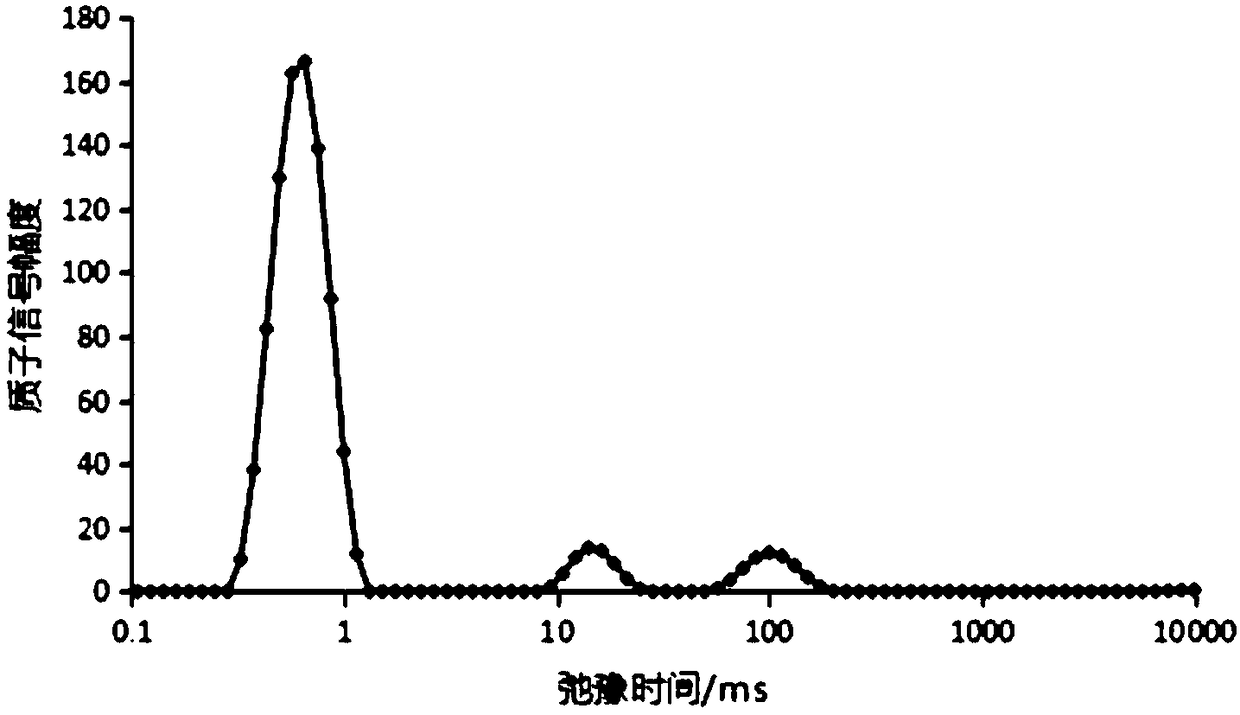Method for detecting grain insectsby use of nuclear magnetic resonance technology
A technology of nuclear magnetic resonance and technical detection, which is applied in the direction of analysis by nuclear magnetic resonance, can solve the problems of impracticality, poor detection effect, and high detection cost, and achieve good market application prospects, simple operation, and high detection accuracy. Effect
- Summary
- Abstract
- Description
- Claims
- Application Information
AI Technical Summary
Problems solved by technology
Method used
Image
Examples
Embodiment 1
[0022] The method for detecting insect pests in a certain wheat grain storage depot using nuclear magnetic resonance technology, the steps are as follows:
[0023] S1: Randomly collect wheat grains that have not been infested by pests in the grain depot as a standard product, take about 1 g of the standard product and put it in an NMR test tube. The height of the standard product in the NMR test tube is controlled at 2.2-2.5 cm. The product was detected by low-frequency NMR, and the spin-spin relaxation time T of the standard product was measured by CPMG pulse sequence 2 , the test conditions for low-frequency NMR detection are: sequence parameter settings: sampling points TD=249612, main frequency SW=200KHZ, cumulative times NS=4, echo time Echo Count=5000, participating inversion points 200, relaxation time points 100, the number of iterations is 1000000;
[0024] S2: Randomly take the wheat grains in the grain depot as the samples to be tested (excluding the wheat grains w...
Embodiment 2
[0029] With reference to the method of Example 1, another wheat grain storage depot in different regions was selected to test, and the following test results were obtained:
[0030]
[0031] Similarly, it can be seen from the above results that the relaxation time T of the moisture in the wheat grain of the sample to be tested 21 , T 22 , T 23 Compared with the uninfected standard, there were significant differences. In order to improve the reliability, the combination of dissection method and dyeing method was used for verification. The results showed that there were egg stage pests and larval stage pests in the wheat grains of the samples to be tested.
[0032]Proved by the above examples, adopt the detection method of grain pest situation provided by the present invention, utilize nuclear magnetic resonance technology, can accurately judge whether the grain of the grain sample to be tested is infiltrated by pests, thereby judge whether there is grain pest in the stored...
PUM
 Login to View More
Login to View More Abstract
Description
Claims
Application Information
 Login to View More
Login to View More - R&D
- Intellectual Property
- Life Sciences
- Materials
- Tech Scout
- Unparalleled Data Quality
- Higher Quality Content
- 60% Fewer Hallucinations
Browse by: Latest US Patents, China's latest patents, Technical Efficacy Thesaurus, Application Domain, Technology Topic, Popular Technical Reports.
© 2025 PatSnap. All rights reserved.Legal|Privacy policy|Modern Slavery Act Transparency Statement|Sitemap|About US| Contact US: help@patsnap.com



